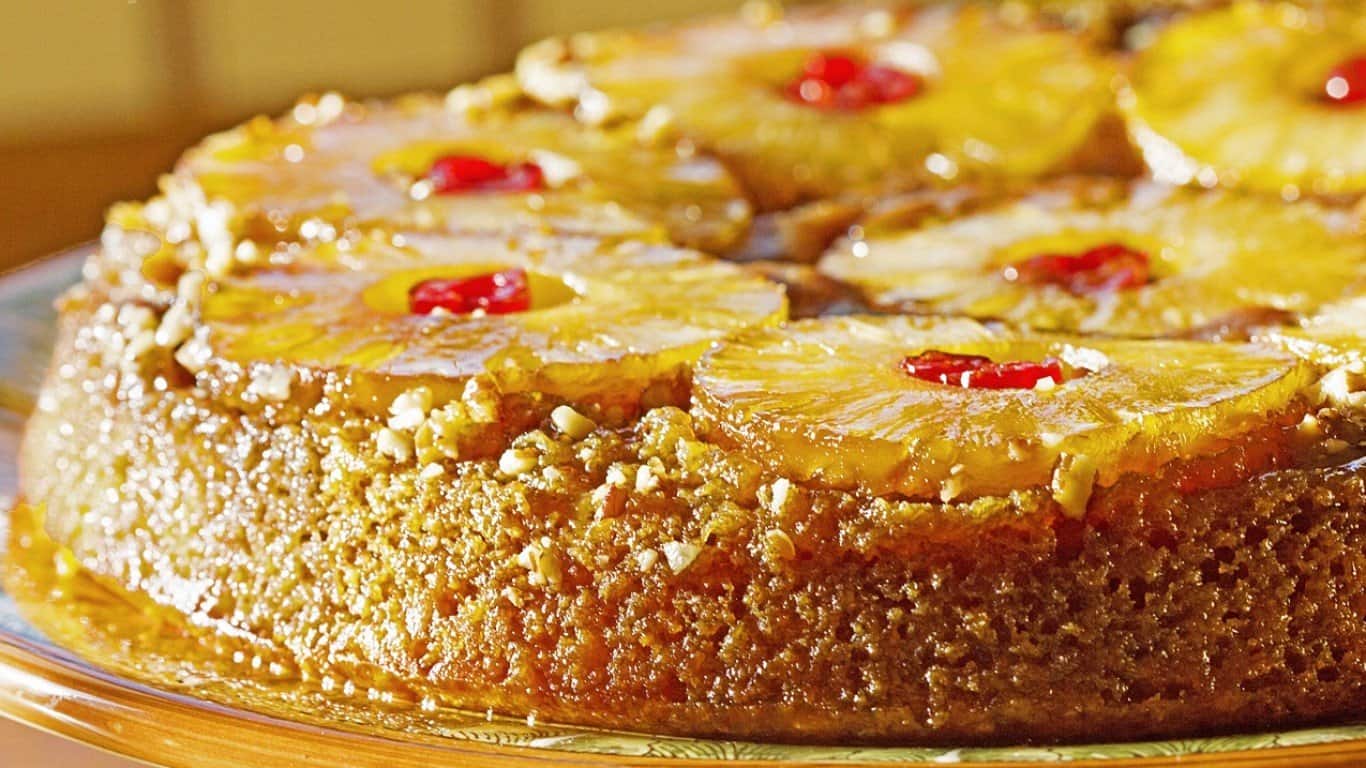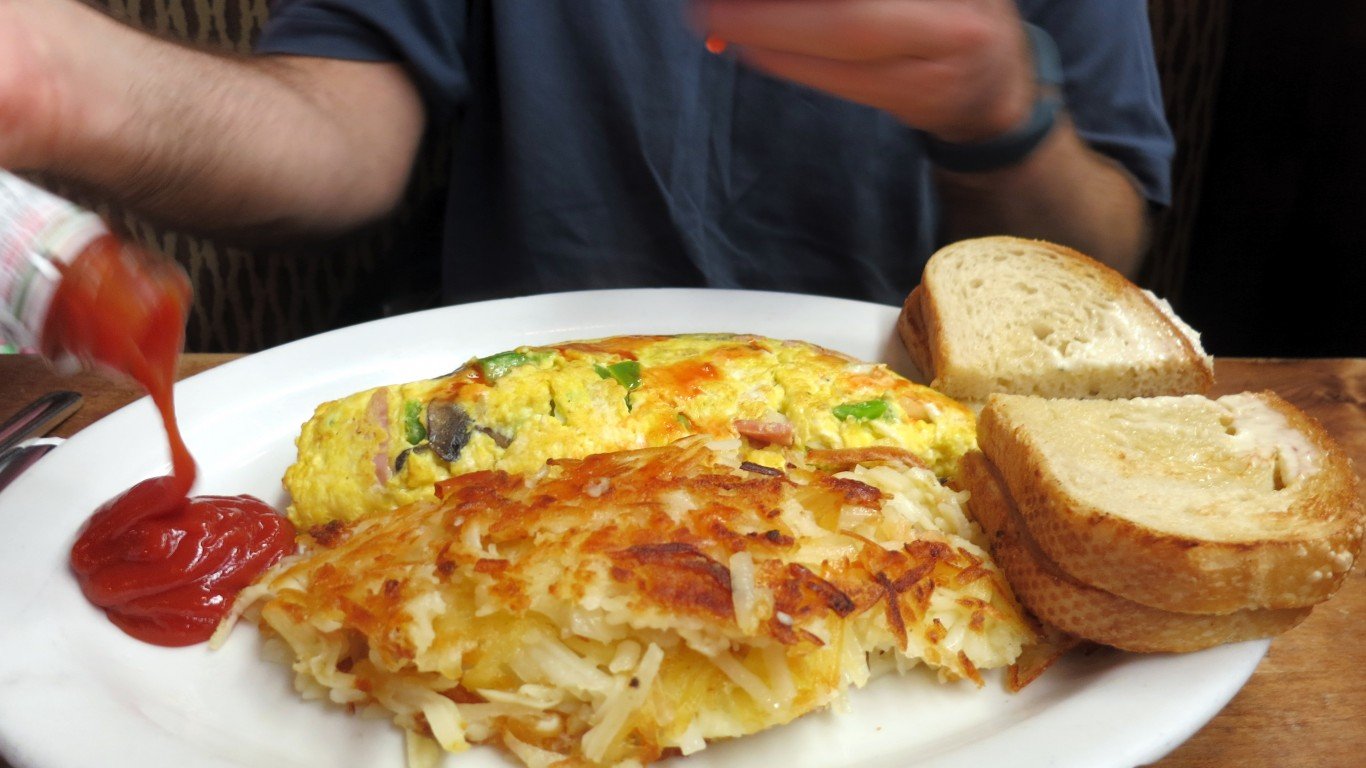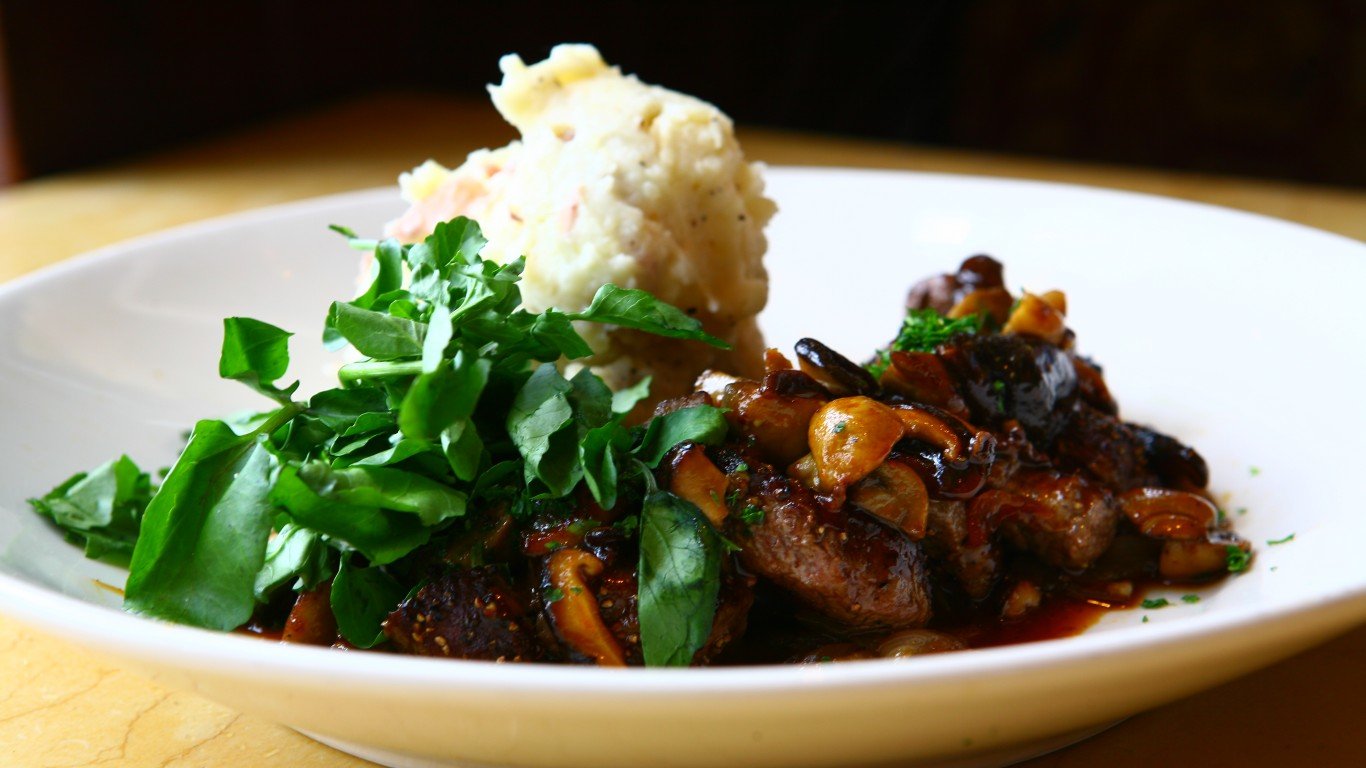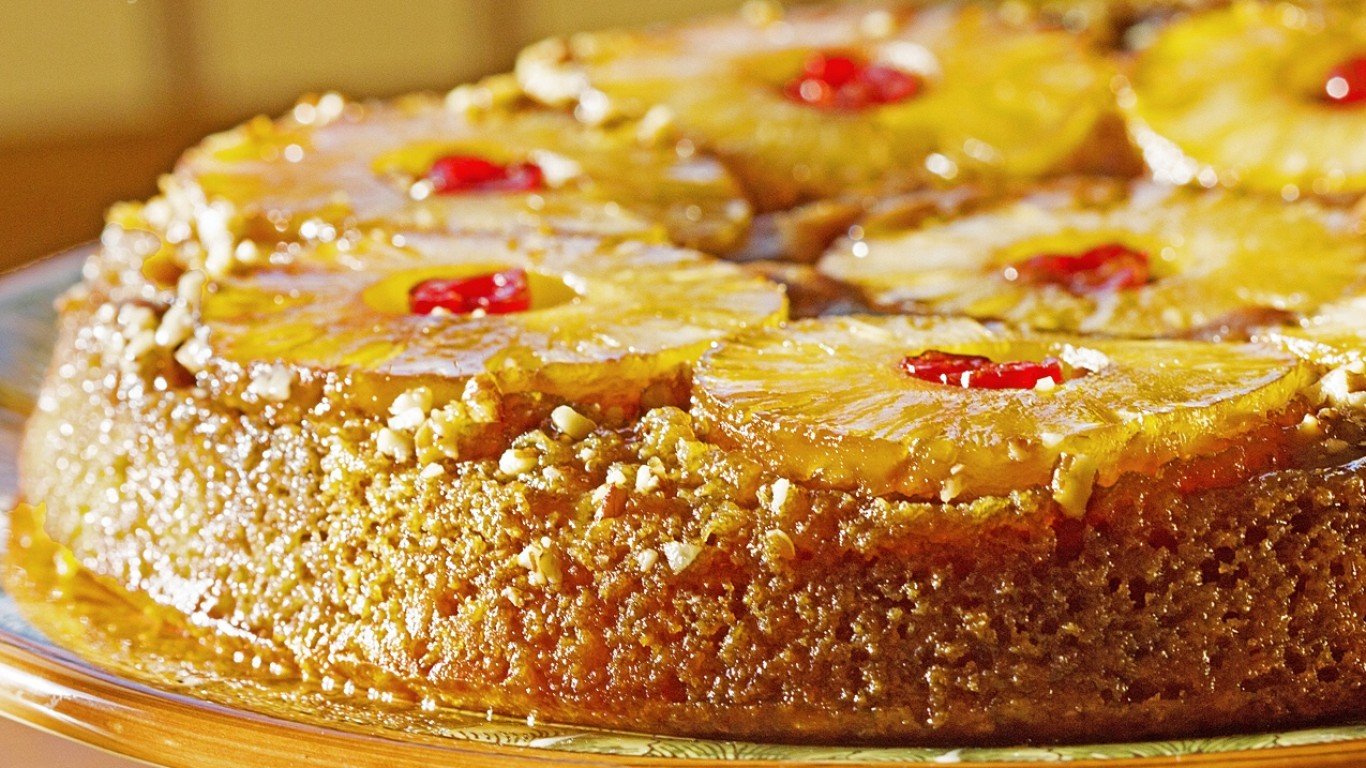The 1950’s saw a new appreciation for food and menu variety, both at home and in everyday, relatively inexpensive restaurants. With women still largely out of the workforce but freed up by modern conveniences, housewives were encouraged to experiment with sauces, foreign foods, fancy desserts, and sensational presentations.
Though many mid-20th century recipes have survived in one form or another, most are viewed as outdated and declassée. Tastes have changed with the year-round availability and expanded range of food items, and with the influences of modern media–from Julia Child to YouTube. You will not see Jamie Oliver cooking with canned peas or Campbell’s soup.
Still, some of the old recipes are worth keeping on the menu. They are comforting, affordable, and, usually, though not always, nutritious. And don’t be embarrassed to serve them to company; just flaunt your 1950’s dinner as retro-themed. (On the other hand, here are retro restaurant dishes that are slowly disappearing.)
Here are 30 old-fashioned dishes that deserve a comeback
Jellied consommé
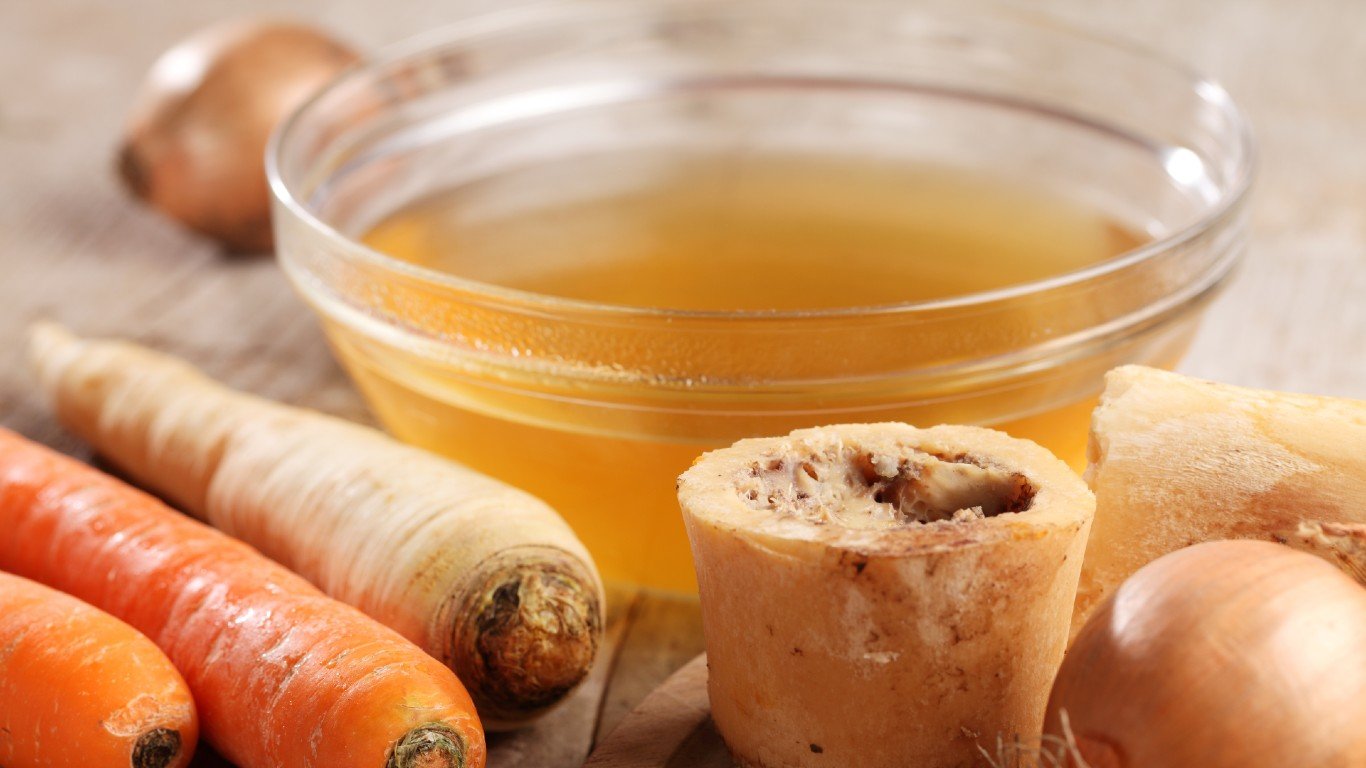
While you still might find a Jell-o salad at a potluck dinner, its savory cousin, jellied consommé is rarely seen. This molded gelatin dish made with clarified broth, usually flavored with wine or vegetables, makes a sparkly summer lunch or appetizer, especially when served in glass bowls.
Turtle soup
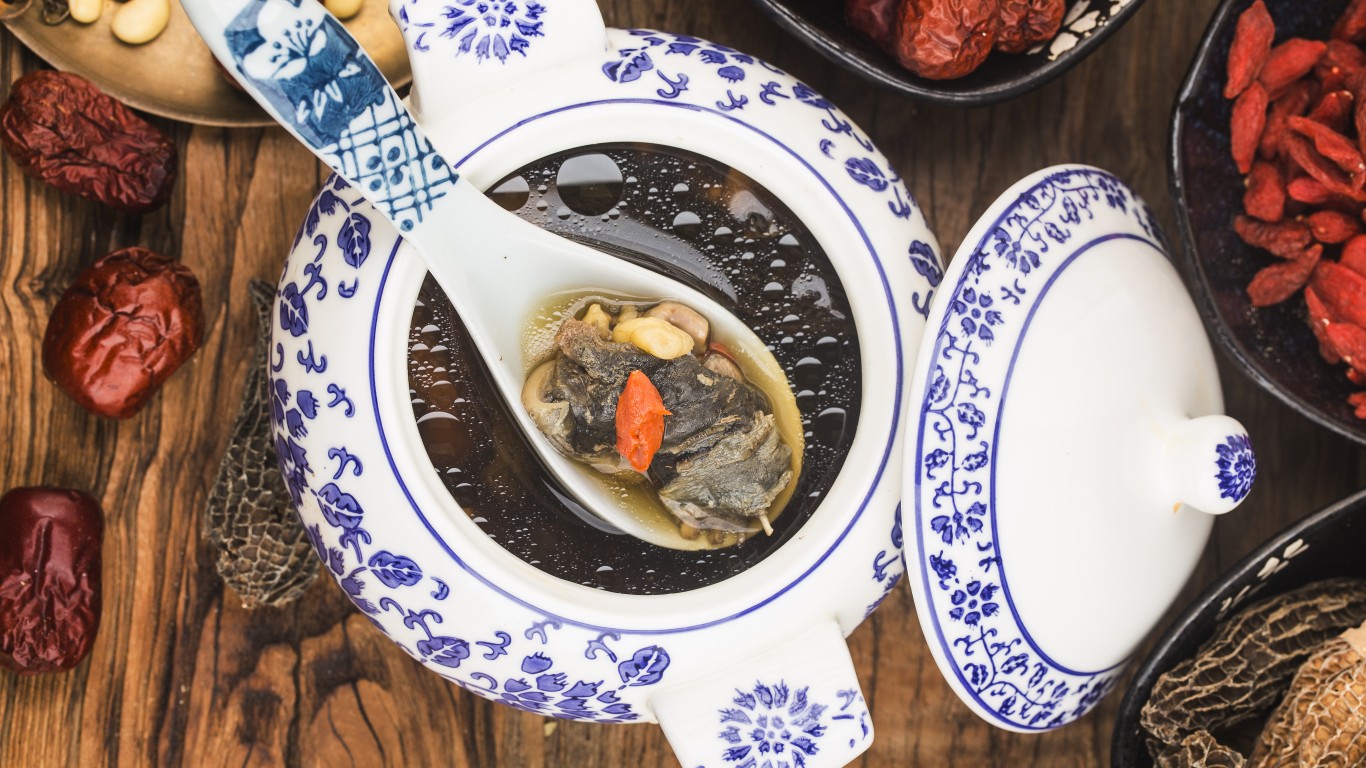
For people, mostly all old, who remember eating turtle soup, it was a deliciously rich, stew-like menu item in many restaurants. Unfortunately, the soup is responsible for the near extinction of its key ingredient in the 1950s and ’60s, alligator snapping turtle. It is now protected from the soup pot.
Boula boula

This version of turtle soup is made with puréed peas, cream, and butter, the peas being the main distinguishing ingredient. Modern recipes forgo the turtle and replace it with beef bouillon for the rich stew taste.
Oysters Rockefeller
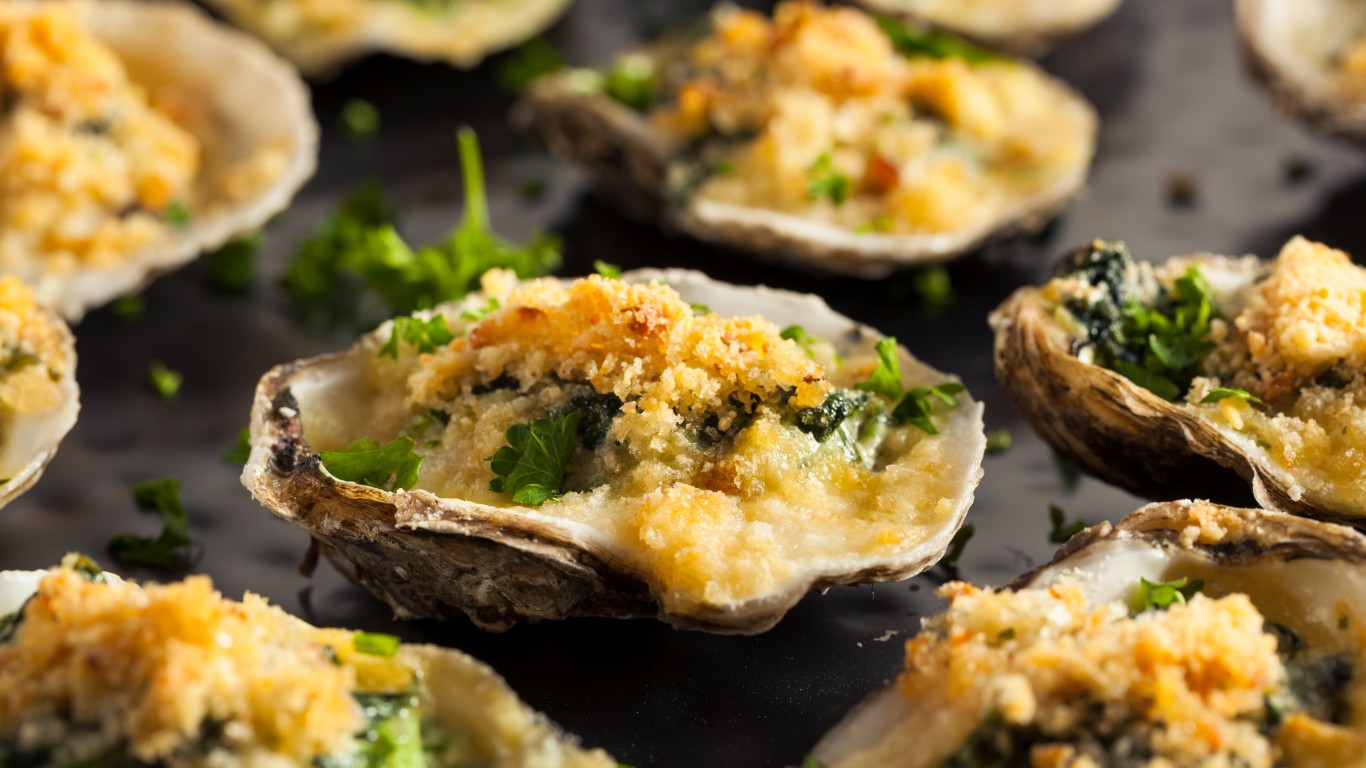
Oysters Rockefeller, named for its richness, is a Southern delicacy made up of oysters on the half shell topped with buttery green herbs and breadcrumbs. Though waning in popularity over the years, they are still seen on menus, often with bacon or spinach replacing the fancy green sauce.
Clams casino
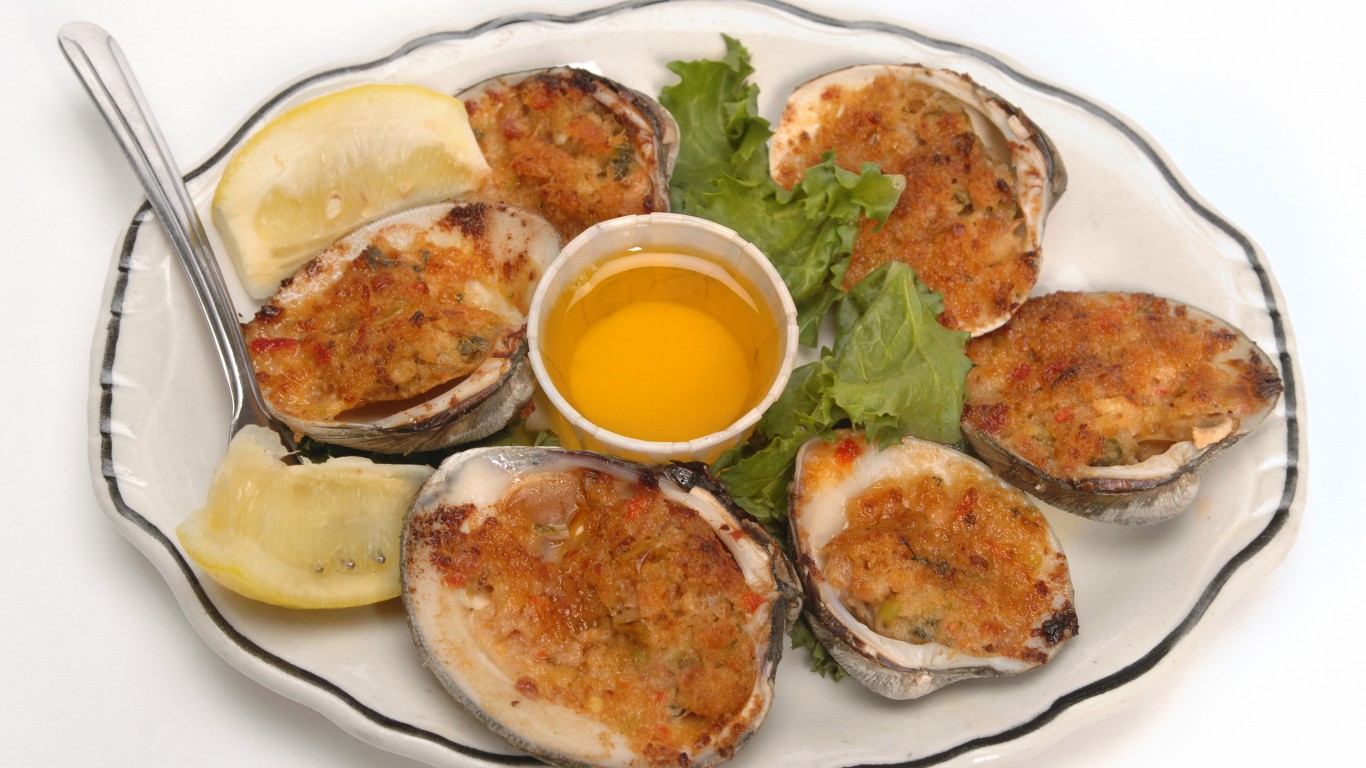
Another rich appetizer, clams casino are New England’s answer to the South’s oysters Rockefeller. These are clams served on the half shell with bacon and, often, peppers, butter, and garlic.
Waldorf salad
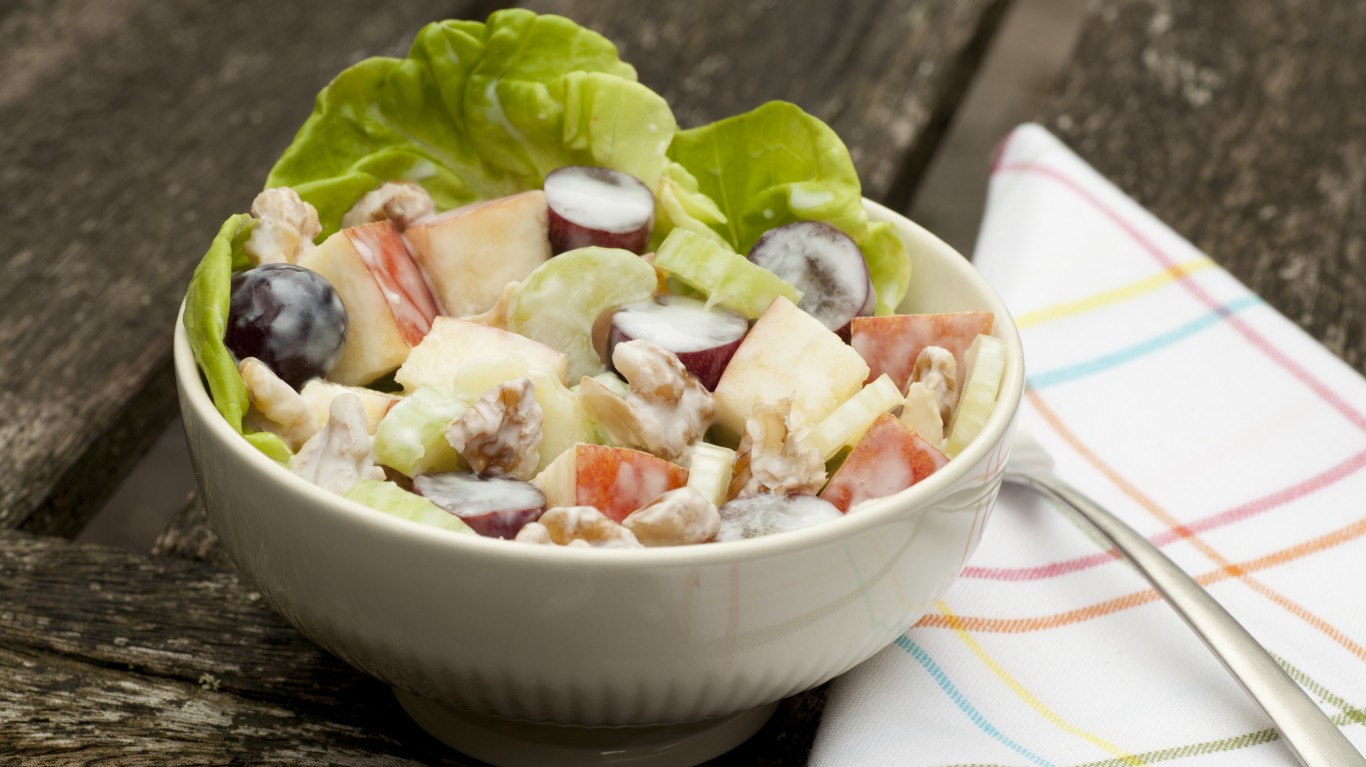
The early recipe for this simple salad, created in the kitchens of the Waldorf Astoria, included just apples, celery, and mayo; walnuts and grapes were added to most versions later. Though it has lost its original caché, it is still enjoyed at picnics.
Denver omelette
With the variety of egg dishes found at any breakfast restaurant, you may not see a Denver omelette, also known as a Western omelette, described as such. Still any waitress or short-order chef worth their salt will know what you want if you order one: an omelette made with ham, onion, and bell pepper.
Fondue
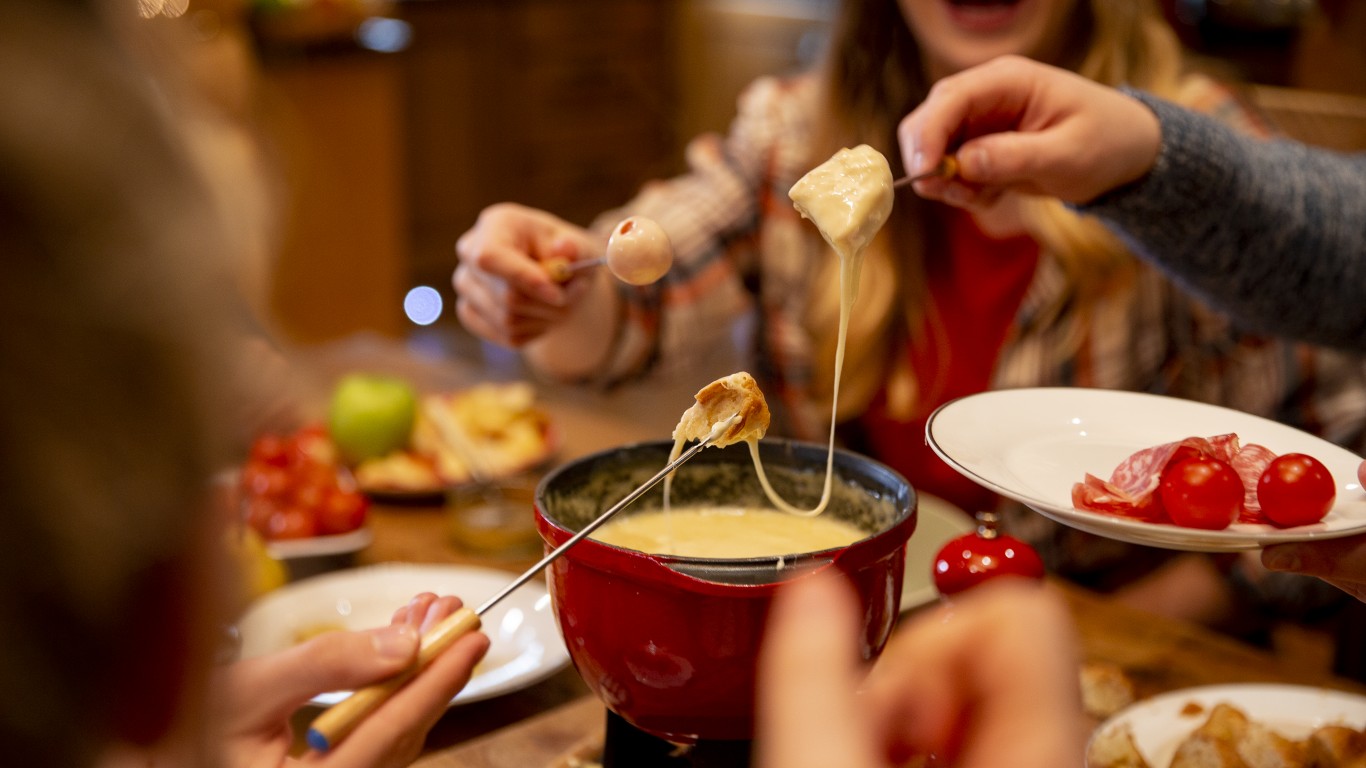
Still popular in Switzerland, where it originated, fondue had its heyday in America came in the 1960’s. The classic version involves melted cheese, but fondue has come to mean food on a long fork dipped in a communal pot of sauce. Today you are most likely to see it with cake or fruit and melted chocolate.
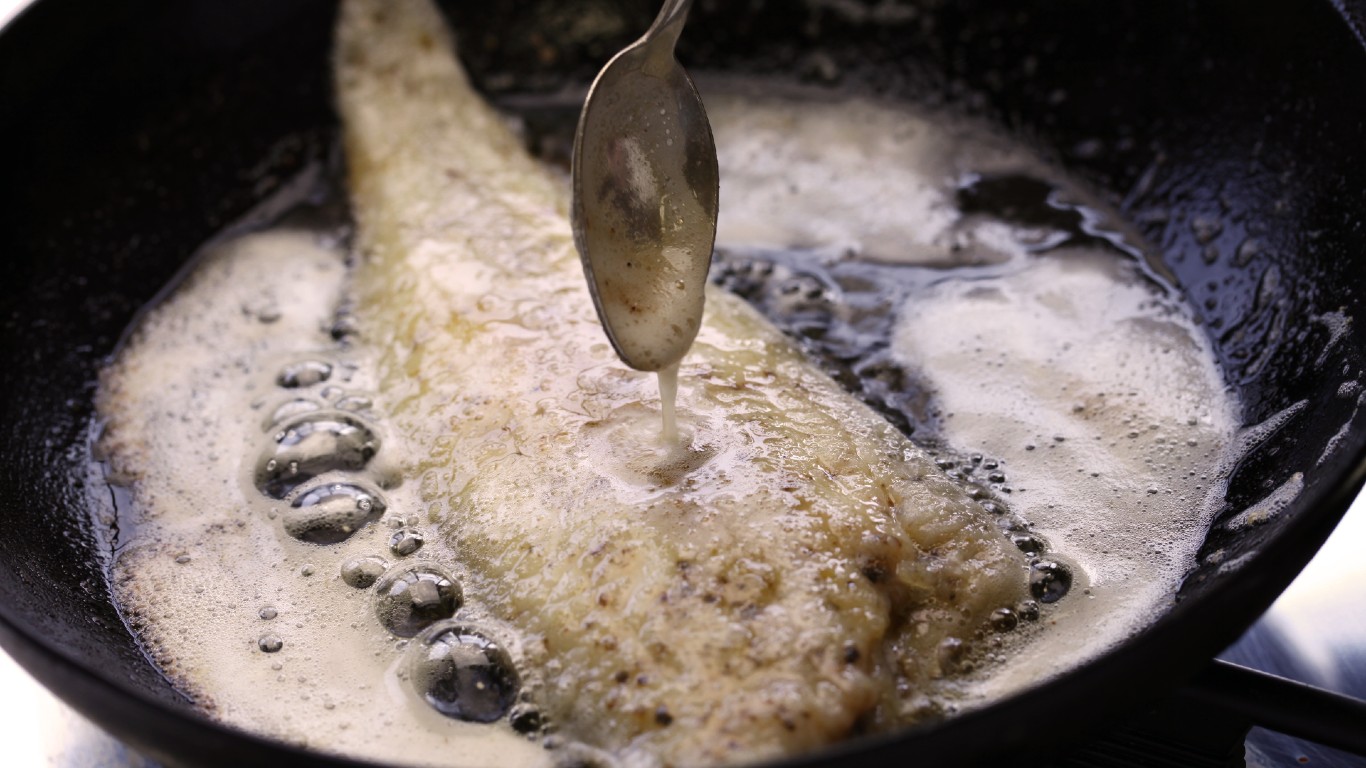
Created by the great French chef Auguste Escoffier for London’s Carlton Hotel around the turn of the last century, this is a simple but elegant dish that deserves rediscovery: sole with a sauce made of wine, cream, and grapes, with the grapes added at the last minute of cooking.
Brook trout amandine

The almonds are almost an afterthought; the heart and sole of this dish is a meunière sauce. Most everyday cooks have made it to enhance all varieties of fish without necessarily knowing the name. It is simply brown butter with lemon and parsley.
Frogs’ legs provençale
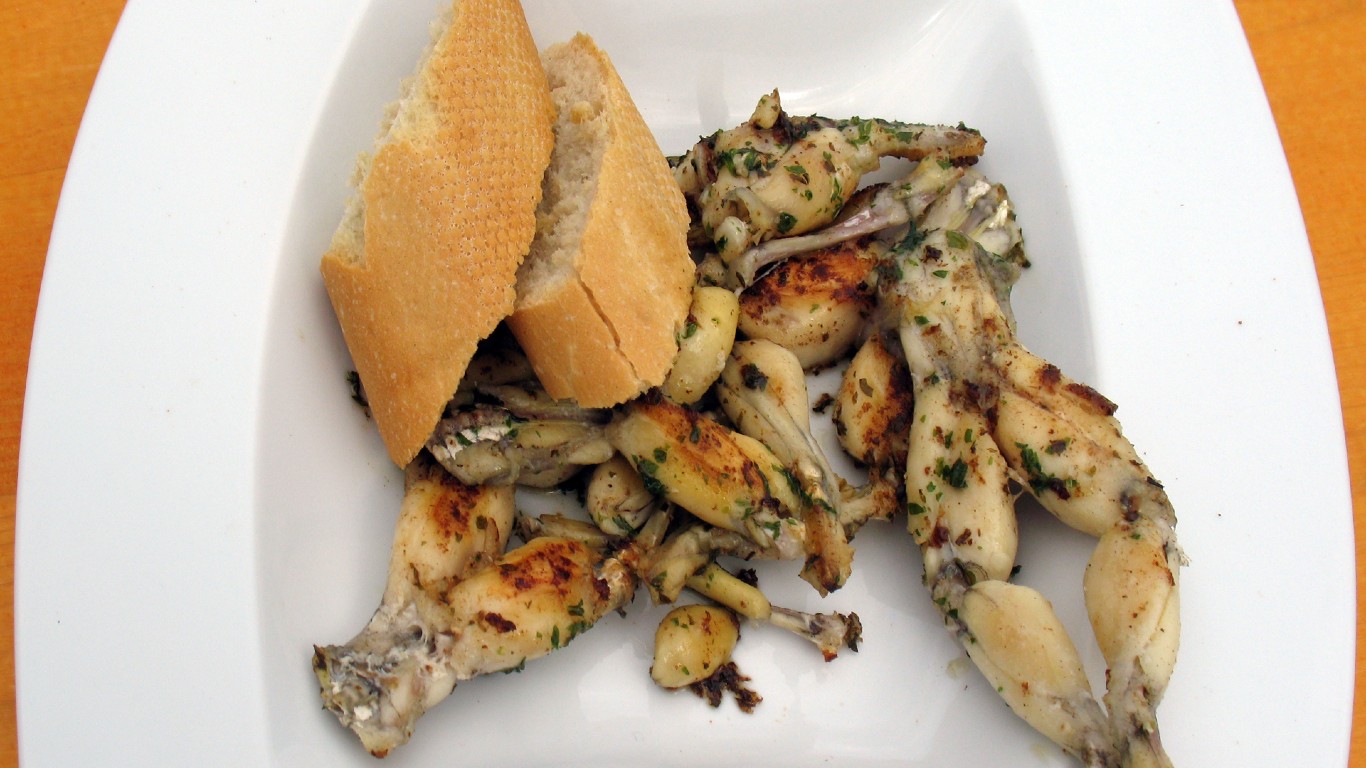
The French eat, literally, tons of frogs’ legs a year and Asians much, much more, but they have never really caught on in the U.S. If you find yourself with a few pairs, provençale is the way to go: a simple sauté in oil, garlic, onion, and, perhaps, a little tomato.
Chicken divan
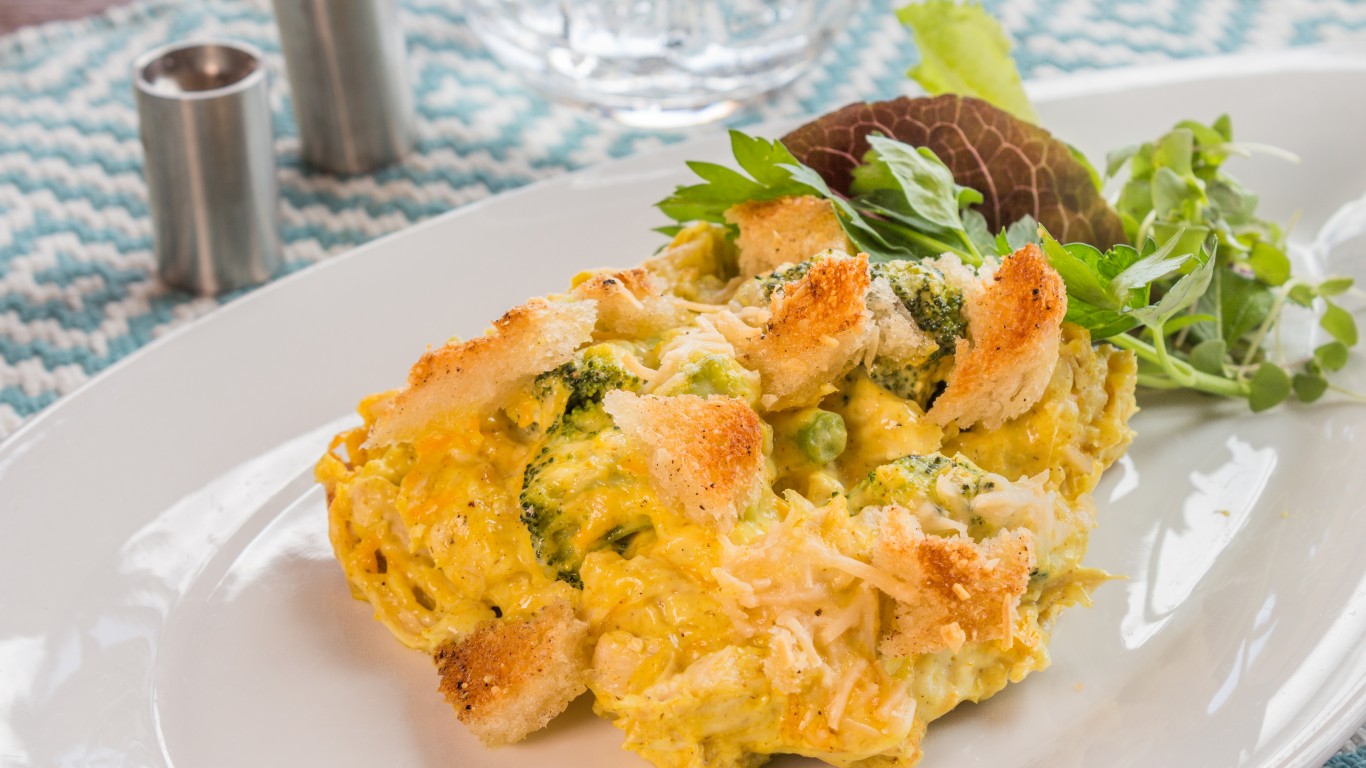
Chicken divan is a classy name — and many casseroles have them–for a 1950s style dish built around canned cream soup. In this case chicken and cheese are the supported ingredients. This, or something similar, is still made regularly in many households, but it is rarely called divan.
Chicken Marengo
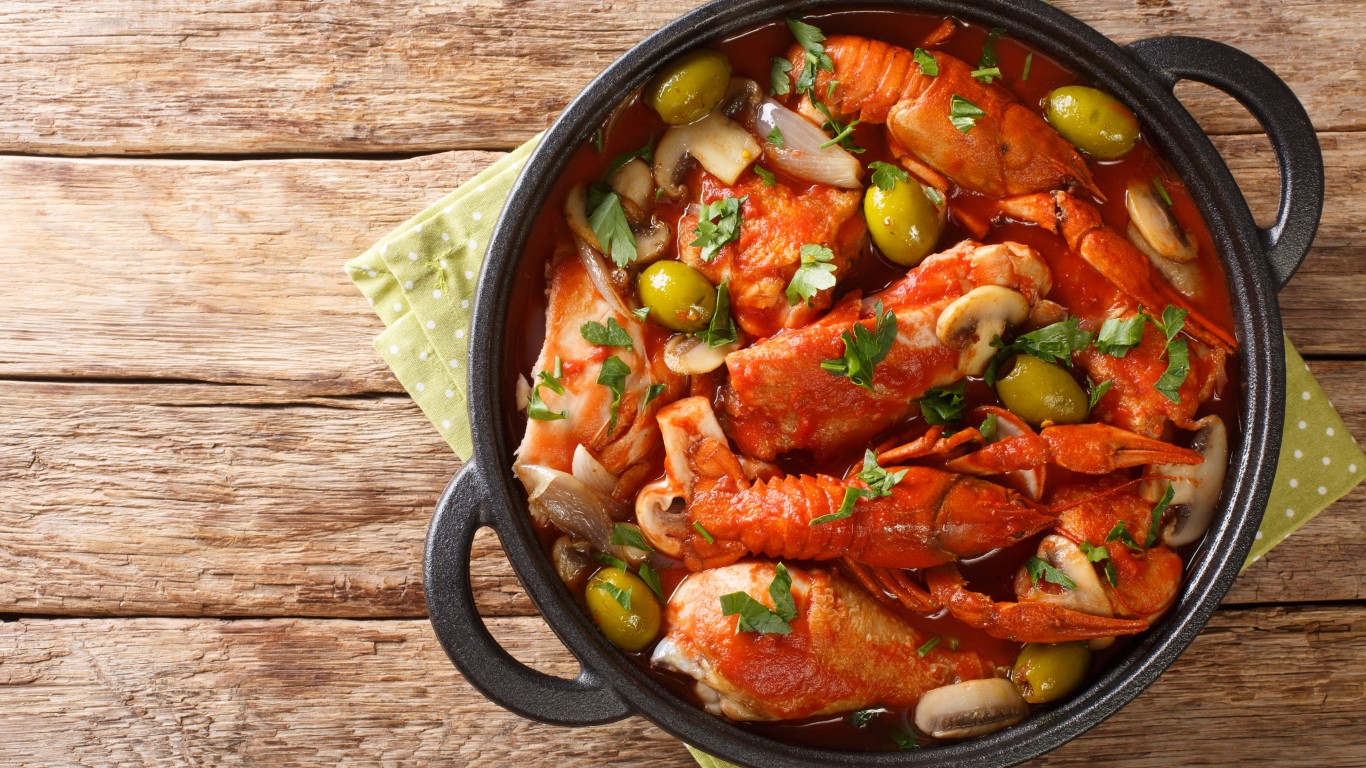
The original chicken Marengo is a French dish of chicken cooked with garlic, tomato, eggs, and crawfish. Chicken Marengo in America has kept the fancy name, but recipes have generally let go of the eggs and crawfish.
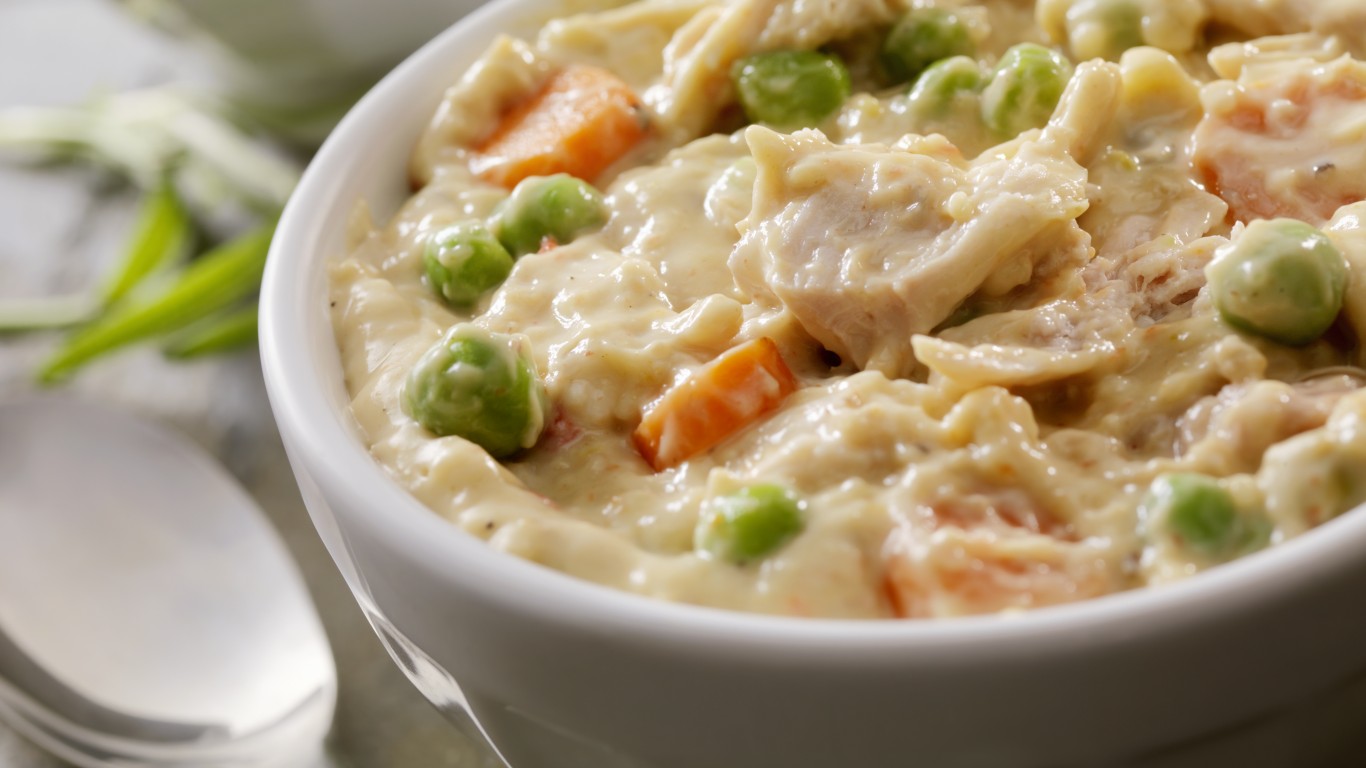
À la king simply means served with a mushroom and pepper cream sauce. Chicken à la king is not generally restaurant fare because of its homely, made-with-canned soup image. It is a versatile family dinner, however: serve it on rice, noodles, or biscuits; and if you don’t have chicken, tuna is just as good.
Chicken Cordon Bleu

Once a popular cook-at-home, gourmet dish, cordon bleu (“blue ribbon” in France) is a style of cooking that started showing up in cookbooks in the 1950’s, whereby meat is stuffed with another meat and cheese, then breaded and fried or baked. The chicken variety is stuffed with ham.
Turkey Tetrazzini
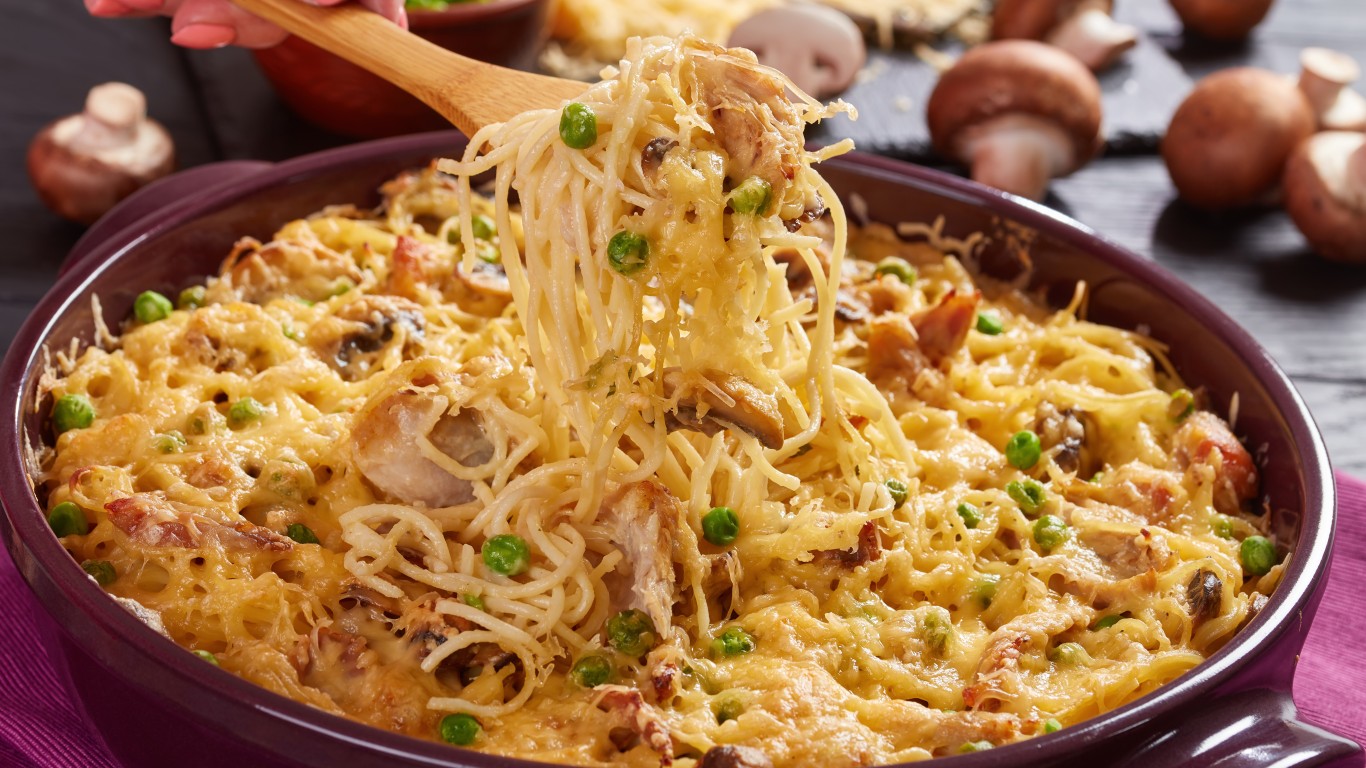
Turkey Tetrazzini is a post-Thanksgiving and cafeteria staple, simply made with turkey, pasta, mushrooms, and cream sauce. It has been devalued in much the way classic chicken casseroles have been, as the classic Escoffier recipe has mutated to meet family supper tastes.

Recipes for duck à l’orange date back to the 14th century, and were famous in the Medici court. Like most classic duck dishes, it is rarely found on menus in the U.S., and even more rarely seen in home kitchens. Americans are just not big duck eaters.
Swiss steak
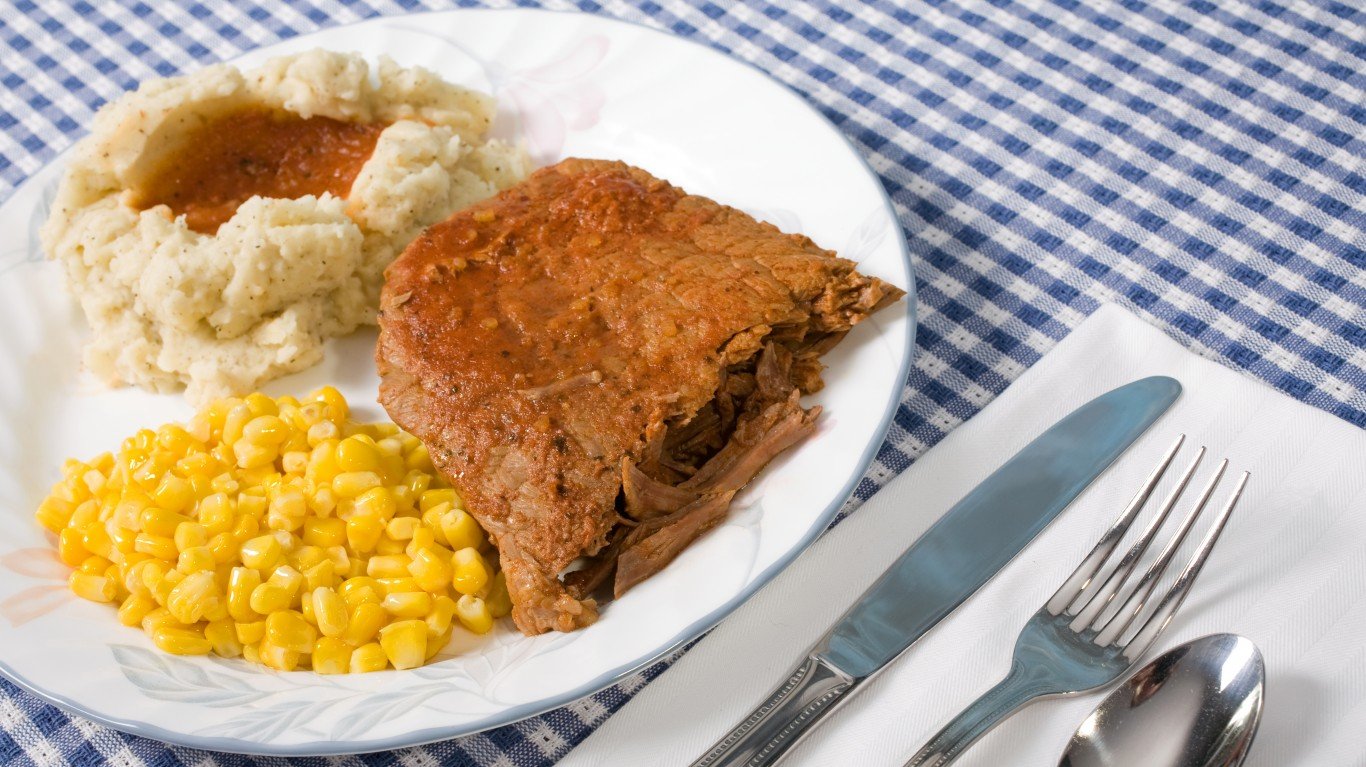
This is another throwback dish from the American playbook that definitely deserves to be on the family go-to menu list. A relatively cheap steak can be made fancy, if not glamorous, with a little pounding and a sauce of tomatoes, onions, and peppers.
Salisbury steak
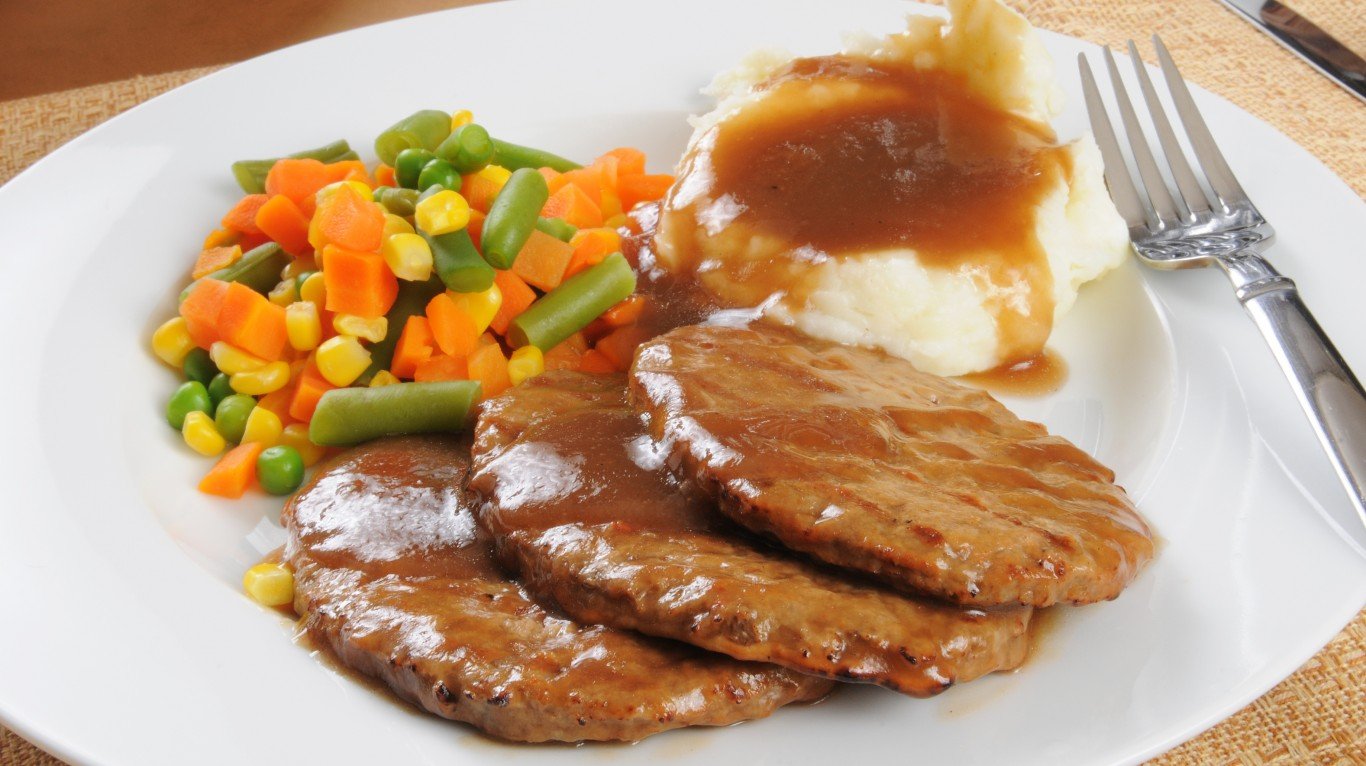
Essentially a glorified hamburger, Salisbury steak is a sauced ground beef patty, made famous in college cafeterias where it was dubbed “mystery meat.” It is cheap eats but otherwise has little going for it.
Steak Diane
Steak diane is still served at slightly upscale family-friendly restaurants that are popular for minor celebrations. Usually made with tenderloin beef, though sometimes with a less expensive steak that has been tenderized, it is topped with a rich cognac cream sauce. The fancier and more traditional way of serving it is with the sauce flambéed tableside.
Beef Wellington
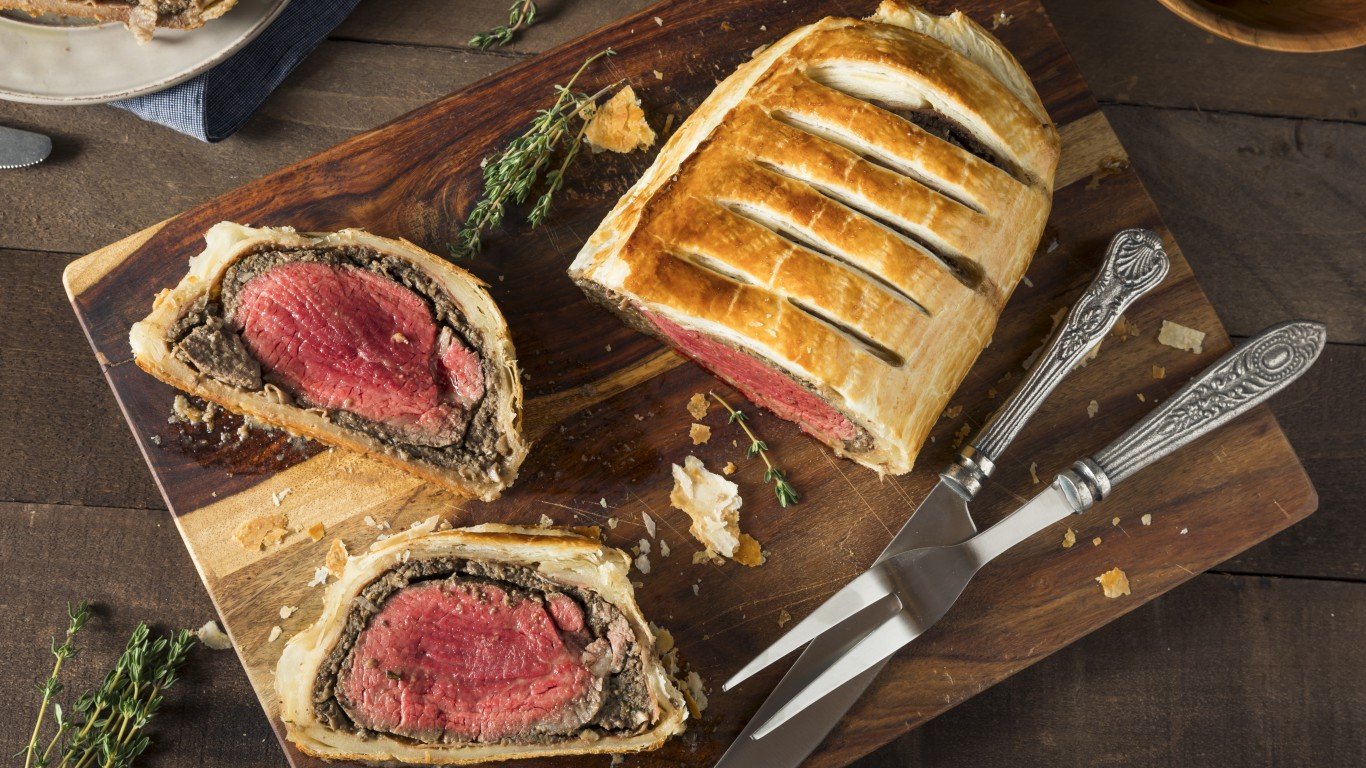
This traditional posh British dish may be making a come-back with the help of popular YouTube chefs like Gordon Ramsay. Essentially beef tenderloin coated in pâté and mushroom duxelles and puff pastry, beef Wellington makes a smashing presentation, and is not that difficult to put together.
Beef Stroganoff
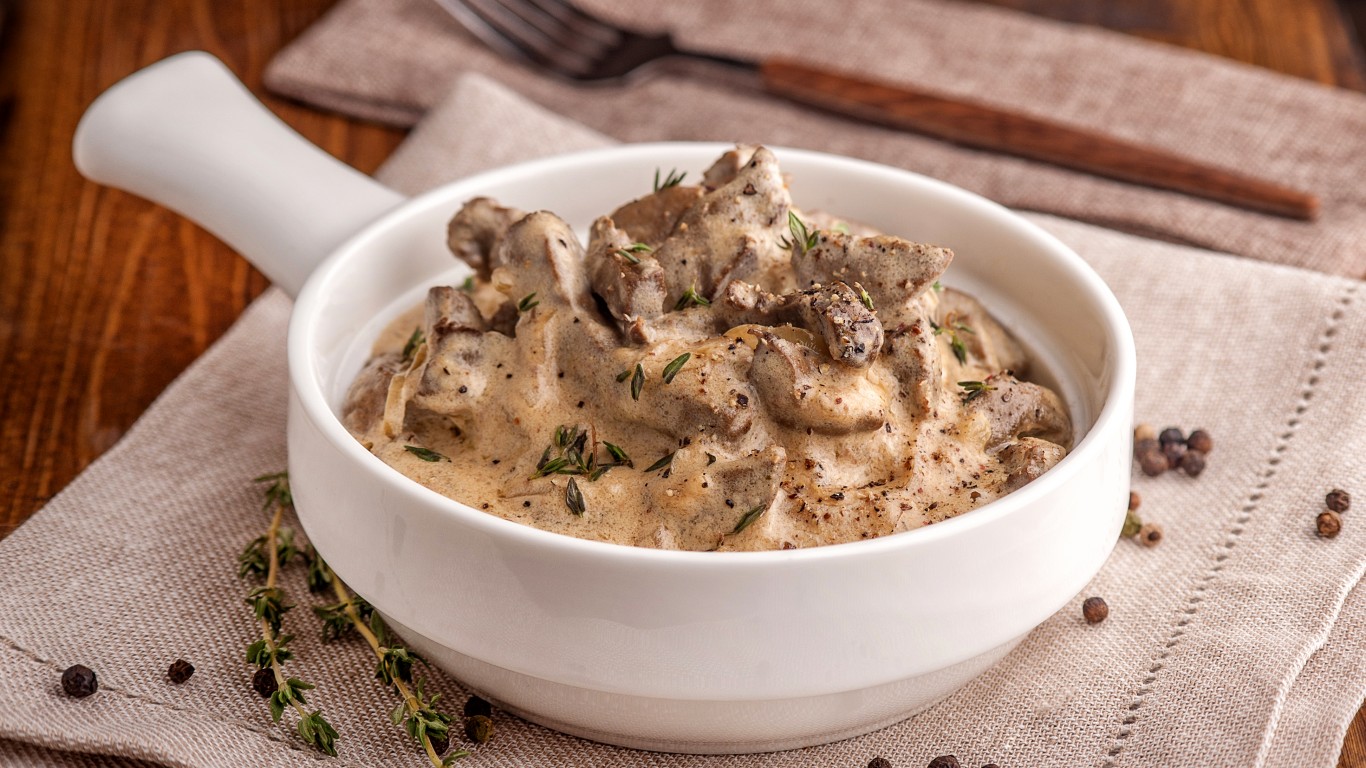
In the mid 20th century, beef stroganoff, with its vaguely foreign vibe, was the quintessential company dinner. It meant a fairly expensive cut of meat on a weeknight, cut carefully into even strips, and a good measure of mushrooms and sour cream, neither of which was as universally appreciated as they both are now. Served with canned peas or a fresh iceberg salad on the side — perfection.
Sauerbraten
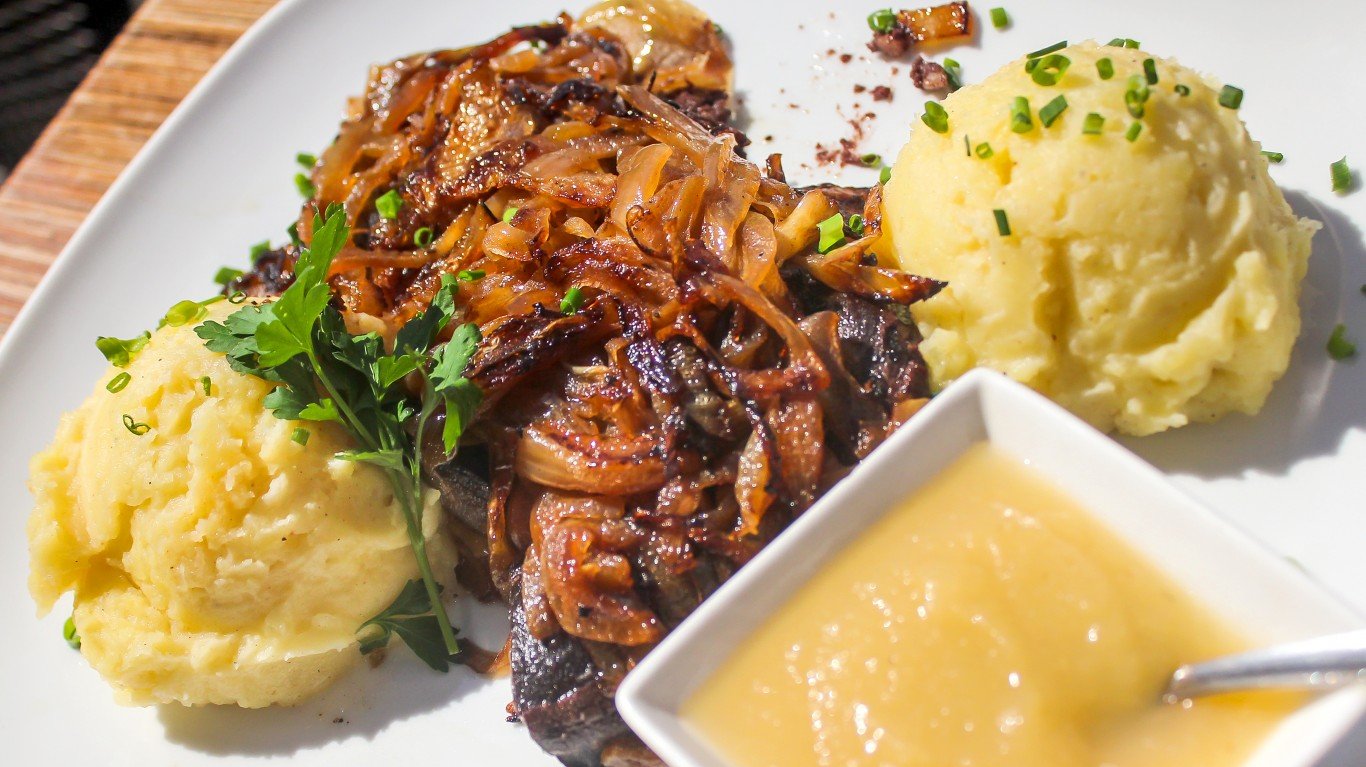
In the last century, Americans began to take an interest in foreign foods that were becoming available in foreign-themed restaurants. Sauerbraten was the German offering of choice: beef roast, long marinated in vinegar and served with noodles and a rich, sweet/tart gravy. The dish has grown out of favor for home cooks, perhaps because of its long lead time and acquired taste.
Calf’s liver with bacon
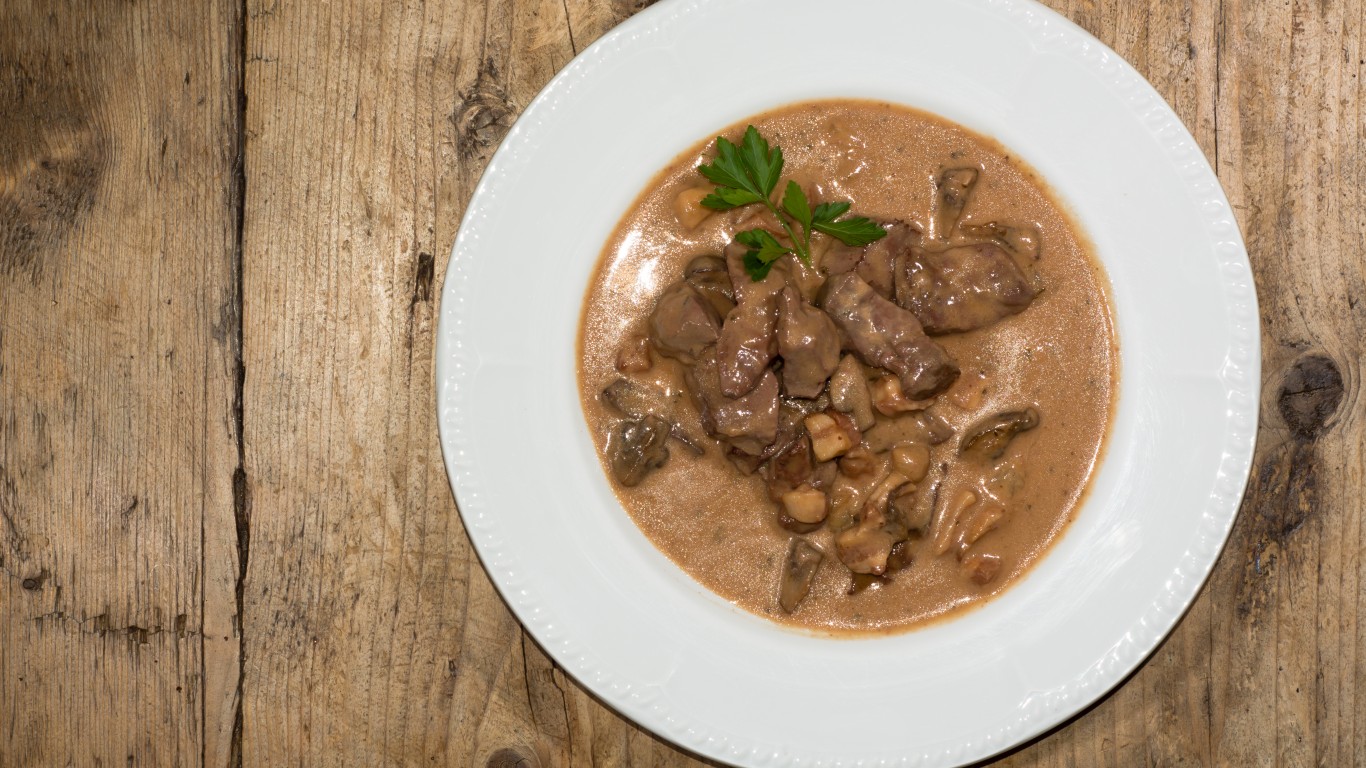
Still standard fare in diners, liver and bacon have always had an anachronistic aspect: liver is a difficult meat to like, but is generally thought to be good for you, paired with bacon, which is universally loved for its taste, but is terribly unhealthy.
Apple pie with cheddar
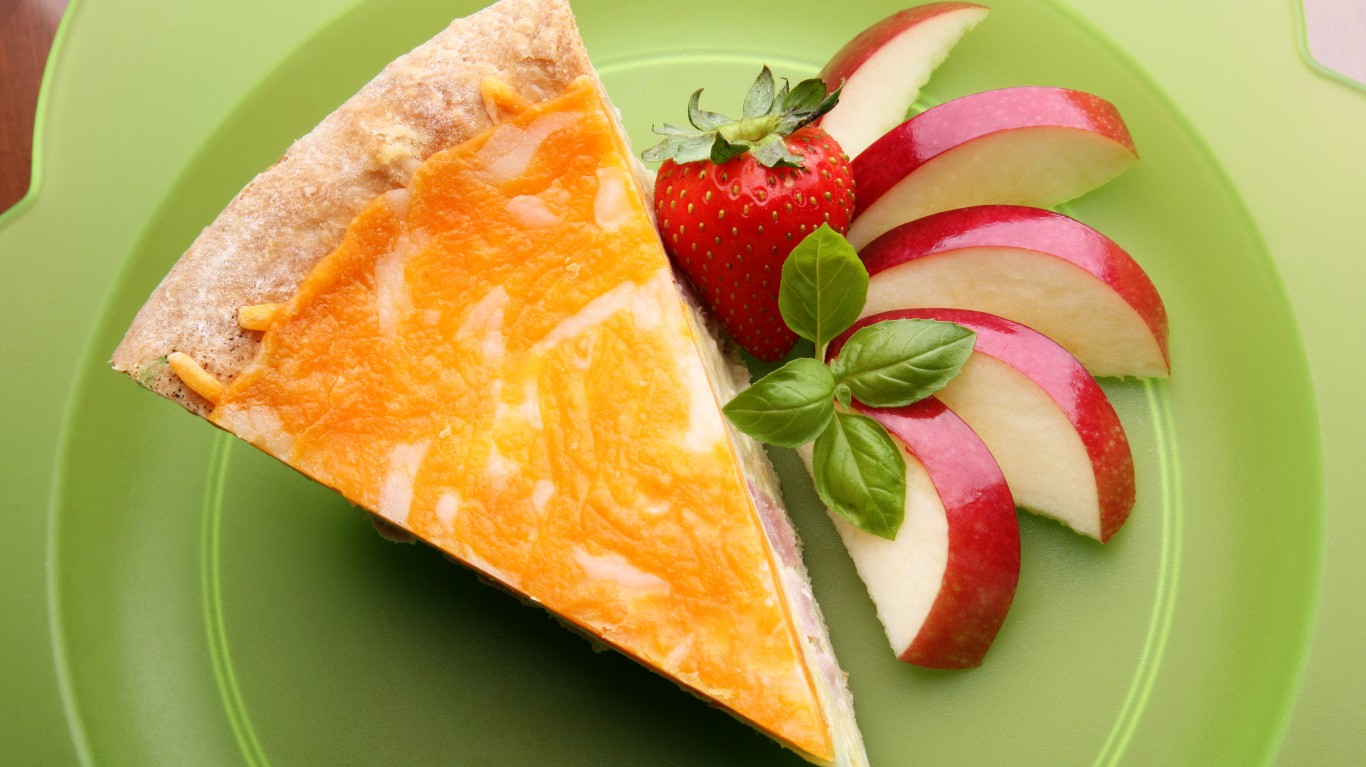
The iconic image of a piece of apple pie is topped with a large scoop of vanilla ice cream. Before the ready availability of frozen treats, however, cheddar cheese was the usual accompaniment, starting in England at least two centuries ago. The combination continues to be the way to go for a lot of people, particularly in dairy states, who like the contrast of sweet, flaky pie and salty, sharp cheese.
Baked Alaska
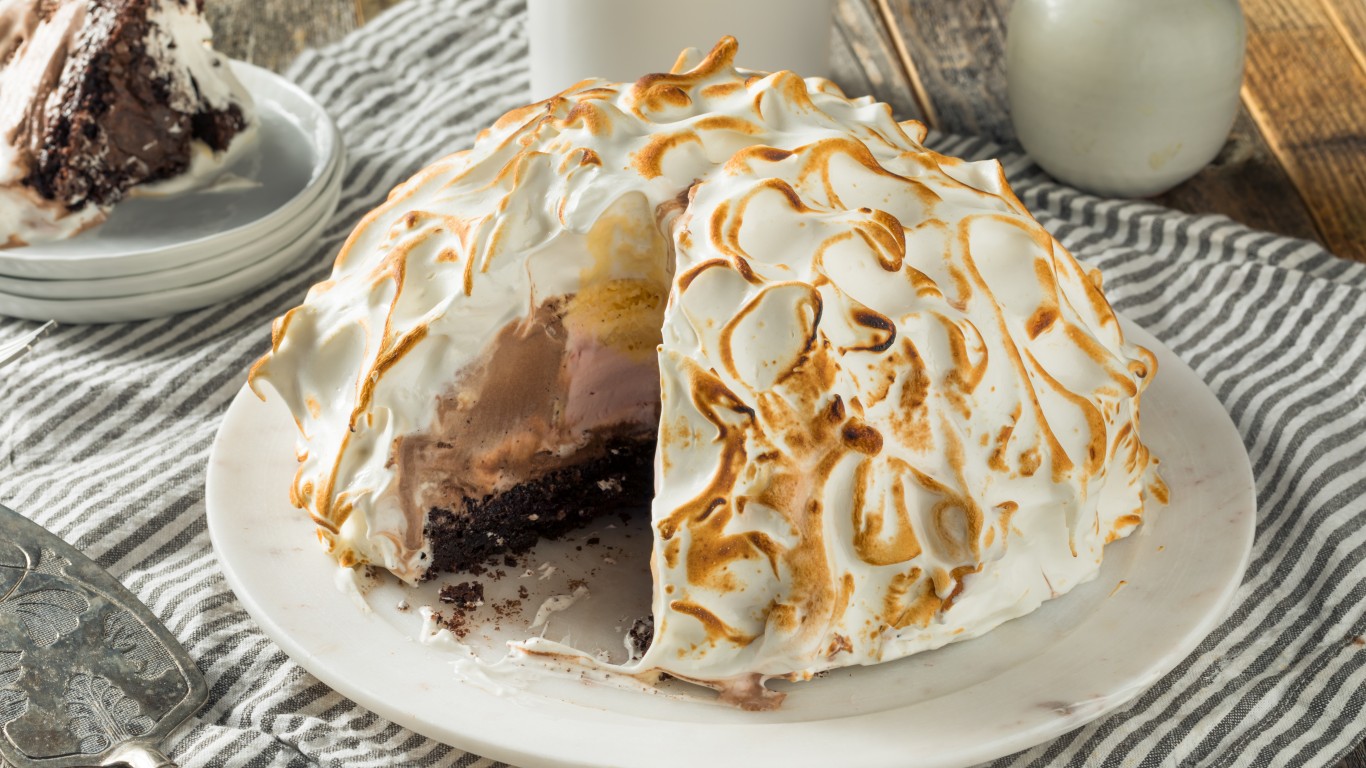
Baked Alaska is delicious, but its fame as a glamorous dessert for previous generations is more about the trick of making it. The baker keeps its center of ice cream frozen by wrapping it in cake before popping in the oven to brown the fluffy coating of meringue.
Pineapple upside-down cake
Decorative, with its bright maraschino cherries centering glazed pineapple slice wheels, upside-down cake was an easy company dessert for ’50s housewives, and usually made with canned fruit and quick-fix cake mixes. Since then it has been crowded out by a succession of trendy desserts, beginning with bundt cakes in the ’60s and onward to the equally easy but more modernly chic,”from scratch,” recipes of today.
Crêpes Suzette
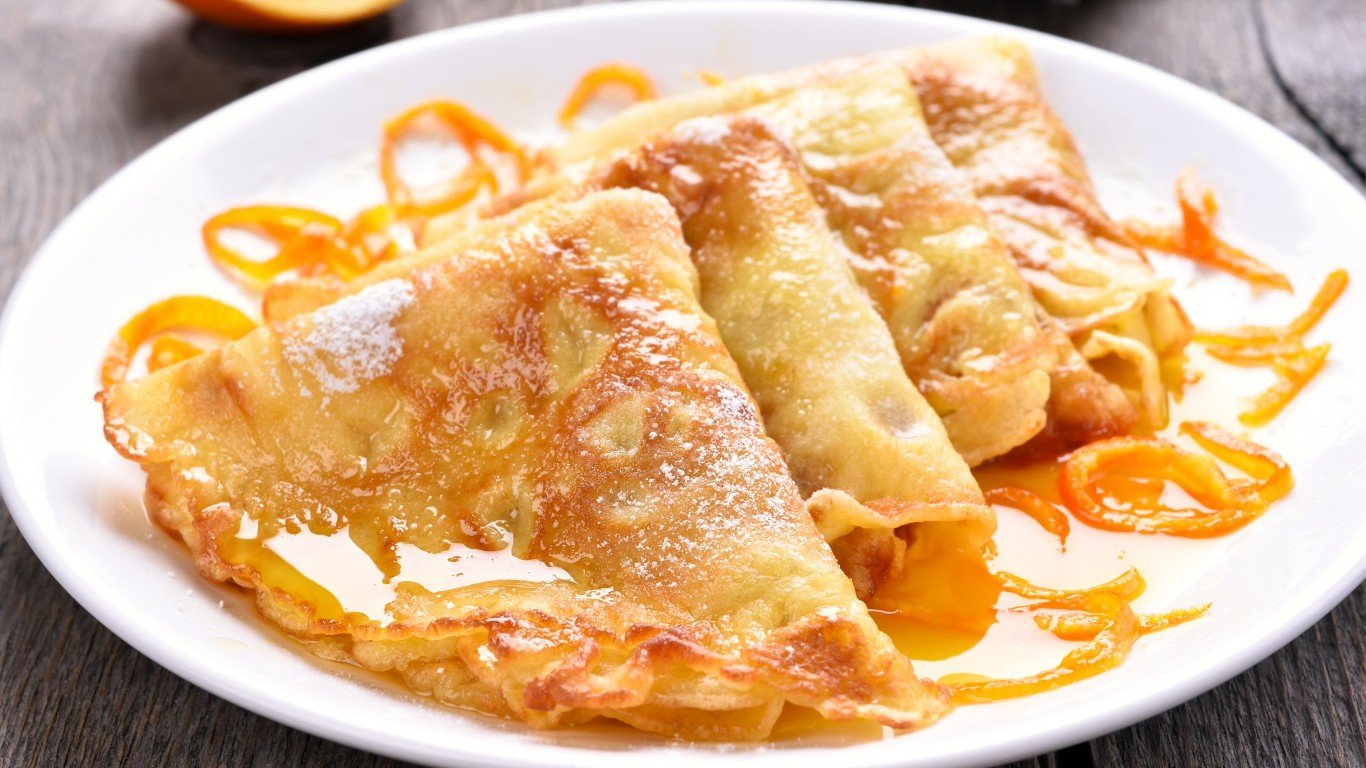
Perhaps the most famous French dessert, and regularly served in French restaurants, it never achieved traction in the U.S., despite its flashy presentation: traditionally made tableside, a syrupy sauce of orange juice and liquor is poured over crêpes and lit on fire.
Profiteroles
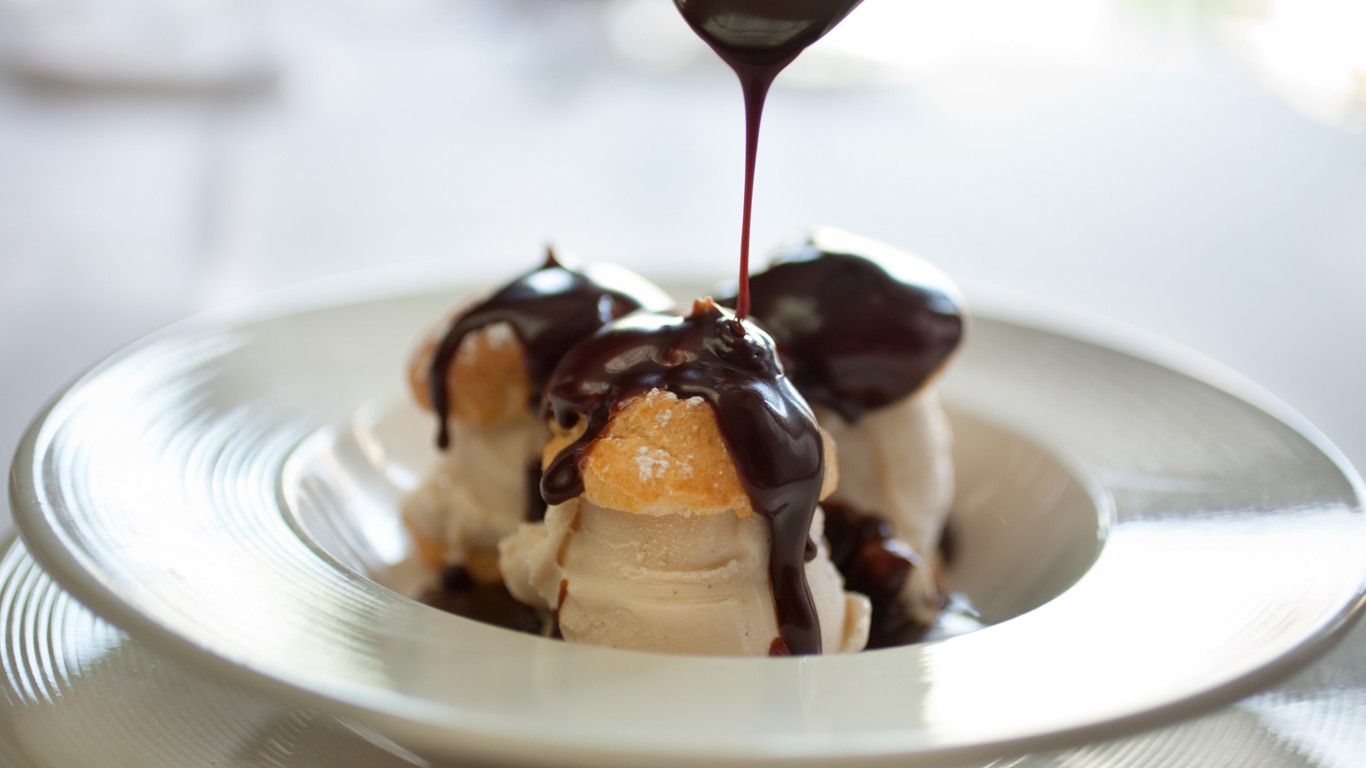
For many people, it only takes a bite for profiteroles to become their favorite dessert. This French confection is usually served as three small cream puff shells stuffed with vanilla ice cream and topped with chocolate sauce. Because it is fussy to prepare in a busy, family style restaurant, where pre-made desserts can be very pleasing, it is easy to understand why we don’t see more of these delectable treats.
